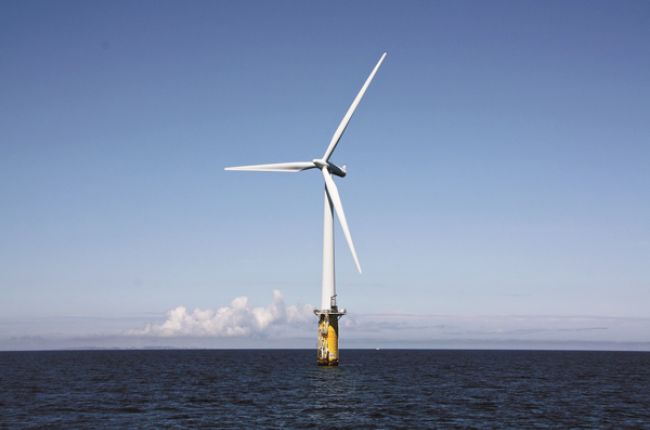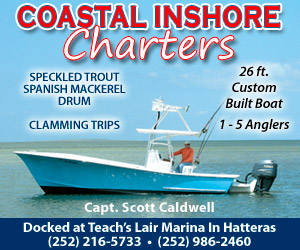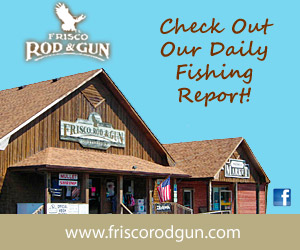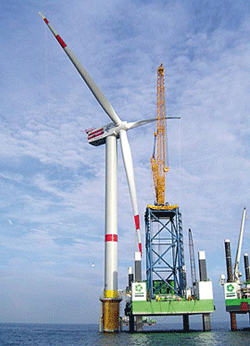
Federal officials say North Carolina will benefit from a new partnership that brings together local and regional fishing interests with federal regulators to collaborate on the science and process of offshore wind energy development.
The National Marine Fisheries Service announced Tuesday that it had signed an agreement with the Bureau of Ocean Energy Management, and the Responsible Offshore Development Alliance, or RODA, to collaborate with fishing interests on offshore wind energy development on the Atlantic Outer Continental Shelf.
The National Oceanic and Atmospheric Administration’s Fisheries Service is the primary federal regulatory agency in charge of marine life and habitats. BOEM, part of the Interior Department, issues leases for energy development. RODA is a membership-based coalition of fishing industry associations and fishing companies.
The 10-year memorandum of understanding says that NOAA, BOEM and RODA have mutual interests, including the responsible planning and development of offshore wind power and other offshore development that could affect fisheries, habitats and the industry they support. The agencies and the coalition agreed to collaborate and forge further agreements on issues of mutual interest.
The collaboration agreement comes at a crucial time in wind energy development, said Chris Oliver, assistant administrator for NOAA Fisheries. “This Memorandum of Understanding will help achieve NOAA Fisheries’ strategic national goal of maximizing fishing opportunities while supporting responsible resource development.”
The NOAA Fisheries Greater Atlantic Regional Office’s geographic scope spans fisheries from Maine to North Carolina. NOAA described fishing as an integral part of the region’s culture and economy going back hundreds of years, and said that offshore wind is an abundant, domestic energy resource near major areas of demand on the coast. Wind is an alternative to long-distance transmission or development of electricity generation in these land-constrained regions, the agency said.
“Any development on the Outer Continental Shelf must consider how these activities can affect current ocean users and the marine environment,” said BOEM Acting Director Walter Cruickshank. “That is why working with federal, state, and local agencies, fishing communities, and the public is such an essential part of our renewable energy program. We look forward to working with NOAA and RODA through early and constant communication to ensure that the most recent information is available to decision makers.”
Project in the Works
So far, only one company is working to develop wind energy off the North Carolina coast.
In March 2017, BOEM held an auction for the Kitty Hawk Wind Energy Area off the coast of North Carolina. Avangrid Renewables, LLC bid more than $9 million and was the winner of lease OCS-A 0508, which covers 122,405 acres. The lease went into effect Nov. 1, 2017. In May 2018, BOEM approved a request to extend the preliminary term for the lease from Nov. 1, 2018, to Nov. 1, 2019.
Paul Copleman, communications director with Avangrid, said fisheries interests are being considered as the company moves toward development off the North Carolina coast.
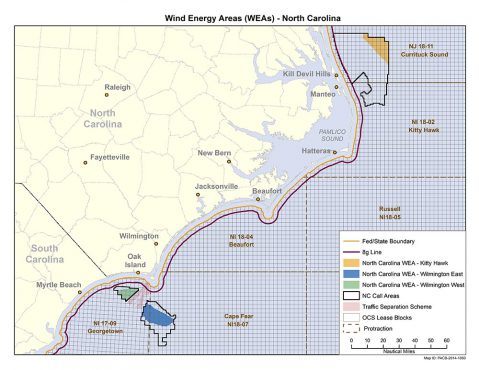
“Over the past six months, we have met with fisheries stakeholders and others to discuss our plans to survey the Kitty Hawk wind energy area more than 24 nautical miles off the coast of North Carolina’s Outer Banks,” Copleman said in an email response. “Those meetings and conversations will continue as surveys progress and data are shared with all stakeholders, fisheries included. We are still very early in our due diligence, environmental studies, and meteorological analysis. We anticipate submission of the Site Assessment Plan in the third quarter, which would clear the way to deploy meteorological ocean buoys in early 2020. If all goes well moving forward, we could be online in 2025.”
Fishing Industry Concerns
Under the agreement, RODA is to work with NOAA Fisheries and BOEM to compile, develop and deliver the best available science and information necessary to address offshore development, fisheries management and ecosystem health.
“The fishing industry has expressed its concern about the potential impacts of rapid large-scale wind energy development to coastal communities and sustainable fishing practices,” said Annie Hawkins, executive director of RODA. “This agreement paves a way forward for fishing communities to give meaningful input to federal regulators in determining the future of our ocean resources.”
Hawkins told Coastal Review Online that the agreement will allow those involved in fishing to stay informed on offshore development without having to attend countless meetings.
“We have members in North Carolina and members with the North Carolina Fisheries Association,” she said, adding that the agreement “documents that we’re working together with these agencies to protect regional fishing interests. It helps provide that level of coordination and working with these agencies lets us take better approaches on how they take data and make decisions, which hasn’t been done in any comprehensive way.”
The process will help fishing interests in all states included in the agreement by bringing into the conversation issues such as economic effects, displacement and restricted transit areas offshore.
“It can be hard to identify who to talk to if you’re a developer or if you’re BOEM,” she said. “This way they can work through our channels without fishermen having to go to infinitely more meetings. We can work with the fishing industry and we have been working with the agencies to do that in a reasonably efficient and inclusive way.”
Hawkins said RODA’s membership is “really all across the board” on the issue of offshore wind development. “We have people who don’t want to see wind farms and we have people who want to work with wind farm developers, but they want to make sure (decisions are) based on good science. There’s much that isn’t known, and we can work together to develop better scientific information.”
“The fishing industry has expressed its concern about the potential impacts of rapid large-scale wind energy development to coastal communities and sustainable fishing practices.”
— Annie Hawkins, executive director, RODA
Working together to engage local and regional fishing interests early and often throughout the offshore wind development processes will help develop a collaborative regional research and monitoring program and lead to scientifically sound decisions, NOAA said.
“This unified approach will help ensure the best possible science and information is used to inform offshore energy development planning, siting, and operations,” said Jon Hare, science and research director for the Northeast Fisheries Science Center. “Tapping into the expertise and the knowledge of the fishing industry is essential to this process.”
Engagement, Research, Monitoring
The federal government has 15 active leases covering nearly 1.7 million acres of the outer continental shelf for potential offshore wind development. Collectively, these leases could generate more than 19 gigawatts, or 19 billion watts, of energy. NOAA said that’s enough to power more than 6.5 million homes.
NOAA Fisheries manages more than 42 species important to commercial and recreational fishing as part of 14 fishery management plans. In 2016, about 4,600 vessels landed more than 1 billion pounds of key fish species, supporting roughly 140,000 seafood jobs. The region is also vital for numerous endangered and threatened marine species, including the North Atlantic right whale.
“NOAA is committed to assessing the impacts of offshore wind energy projects on these resources,” said Michael Pentony, regional administrator for the Greater Atlantic Regional Fisheries Office. “The development of offshore wind energy projects must be done in ways that support the protection and sustainable management of our marine trust resources, fishing communities, and protected species.”
In addition to planning, siting and developing offshore wind power, the agreement cites collaboration on regional research and monitoring to ensure decisions are based on the best available science.
NOAA said the collaboration with BOEM, states and fishing industry interests throughout the renewable energy leasing process will help improve compatibility of offshore wind with other ocean uses and create an effective regional research and monitoring program that will help improve understanding of potential ecological, economic and social effects related to offshore wind development.



